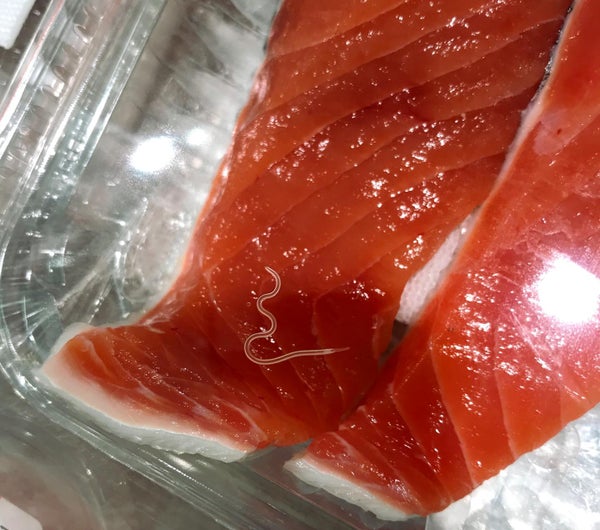I’m a big fan of sushi and ceviche, so I was alarmed to see the headline on a recent news release from the University of Washington stating that “‘sushi parasites’ have increased 283-fold in past 40 years.”
But after digging into the research, which came out of a marine ecology lab run by Chelsea Wood at UW’s Seattle campus, I learned that the rising abundance of marine worms known as anisakids is actually less of a problem for people than it is for whales and dolphins, which are the natural hosts infected by these parasites.
Wood’s team did what’s known as a meta-analysis. They collected data from 123 papers published over the past half-century that estimated parasite abundance in various species at sites all over the world between 1967 and 2017.
On supporting science journalism
If you're enjoying this article, consider supporting our award-winning journalism by subscribing. By purchasing a subscription you are helping to ensure the future of impactful stories about the discoveries and ideas shaping our world today.
Their analysis, published last month in the journal Global Change Biology, found that since 1978, when less than one worm was seen in every 100 host animals on average, the prevalence of anisakid parasite infection has skyrocketed to the point that more than one worm is now typically seen in every host animal examined in 2015. [Evan A. Fiorenza et al., It’s a wormy world: Meta-analysis reveals several decades of change in the global abundance of the parasitic nematodes Anisakis spp. and Pseudoterranova spp. in marine fishes and invertebrates]
Anisakid worms grow in the guts of whales, spread to krill through the whales’ poop and then move up the food chain to squid and small fish like anchovies, then to big fish like salmon, tuna, and halibut and, finally, to humans.
In the U.S. and most parts of Europe, fish and squid served raw must first be frozen to kill the nematodes and their larvae, which are big enough to see with the naked eye. And even if you’re unlucky enough to eat live anisakid larvae in your sushi, ceviche, or gravlax, you’ll probably be fine. The worms rarely survive long in the human gut to cause anisakiasis, which typically involves abdominal pain and vomiting.
The condition seems to be most common in Spain due to Spaniards fondness for raw anchovies. Experts estimate there are roughly 8,000 cases a year in Spain—that works out to about one illness for every 10,000 meals of raw fish eaten.
Chelsea Wood says the findings haven’t put her off eating sushi. Her concern is that the rising abundance of anisakids might be harming the dolphins and whales that these parasites evolved to infect and grow inside for years. She notes that there are millions of species of parasites in the ocean, and we know very little about which ones are becoming more common. The epidemiology of the oceans is still in its infancy.
—W. Wayt Gibbs
[The above text is a transcript of this podcast.]

